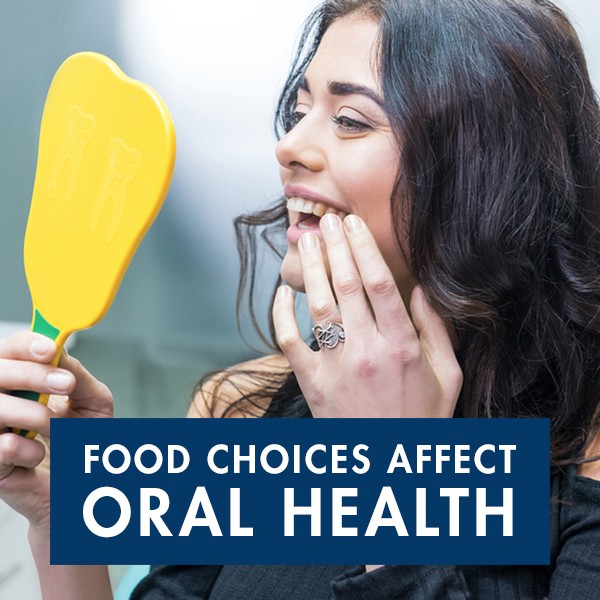A large number of Americans are getting dental implants and that number is only growing with each year. While implants offer many solutions to periodontal complications and tooth damage, they also present the possibility for further gum-health issues. That means that if you’re going to get implants, you cannot slack off on your dental hygiene; in fact, you must be even more diligent about keeping your mouth clean and bacteria free.
You’re going to want to listen to us about this one — if you start to get lazy about your implant maintenance, you might leave yourself vulnerable to peri-implantitis. And yes, this infection is every bit as scary as its name makes it sound — it’s basically a big word for something that you never, ever want to happen to you. Peri-implantitis is an infection that causes inflammation in the gums around your dental implant and could lead to implant failure. If you’re thinking to yourself, “that could never happen to me,” you’re sadly mistaken. The truth is that this infection affects about 43% of those with implants. We know that you don’t want to be a part of that statistic, and you won’t be if you take the proper steps to keep your implants clean.
There is good news: cleaning your dental implants is not so different from cleaning your natural teeth. You’ve already had a life’s worth of practice — you brush your teeth every day! You’re already the expert at keeping your teeth clean, and it only takes a few extra steps to keep your implants clean. A small amount of extra effort toward your dental routine can go a long way toward ensuring the longevity and effectiveness of your dental implants.

Cleaning Tips For Single Dental Implants
Brush At Least Twice a Day with a Soft-Bristled Toothbrush and Non-Abrasive Toothpaste
Like we said, you (hopefully) already brush your teeth twice a day. That means that you’re already well on your way toward effective implant care. It is imperative that you brush at least twice a day to keep your dental implants clean, but most dentists also recommend brushing after every meal. This will help you to make extra sure that no food debris will build up in the nooks and crannies of your dental implant. If you need to brush after eating out, you can even purchase pocket-sized disposable toothbrushes for on-the-go brushing to make sure that you never miss an opportunity to clear out excess food.
While you’re thoroughly brushing your dental implant, make sure to use a soft-bristled toothbrush and a non-abrasive toothpaste. Softer bristles are gentler on your teeth and gums and will decrease your likeliness of damage, and toothpastes that are free of abrasive ingredients, like baking soda and stain remover, will minimize the wear on your implant components. And don’t worry, making these switches will not sacrifice cleaning quality. By switching to a soft-bristled brush and non-abrasive toothpaste, you can maximize cleanliness without sacrificing your gums and implant quality in the process.
Incorporate a Water Flosser
Most periodontists recommend water flossers over regular floss for a few reasons. First, many brands of floss actually contain particles that, when shed in the act of flossing, increase your risk for peri-implantitis. Even when you’re doing the right thing by flossing, you might come up against some unintended consequences. Additionally, water flossers are just better at reaching all of the nooks and crannies of your mouth, with the ability to disrupt and remove bacteria in pockets up to 6 mm deep! And if you do make the choice to switch from your regular floss to a water flosser (you should), be sure to always use it before brushing your teeth to avoid removing the fluoride that coats your teeth when you brush them.
Try Crown and Bridge Floss
Though your regular floss won’t cut it, that doesn’t mean that you need to swear off floss altogether! Crown and Bridge floss is specifically designed for the delicate care of dental implants. Here’s how it works: it consists of two stiff, nylon ends on either end of a fuzzy middle section. By poking and pulling one nylon end through the gap between your implants at your gum line, you can use the fuzzy middle section to scrape any plaque off of your implant softly, so as not to damage the sensitive implant. And as a general rule, use this floss after brushing your teeth, which will distribute the fluoride from your toothpaste around your implant and aid in protecting against bacteria.
Brush All Around the Implant Crown
Plaque tends to build up right underneath your implant crown, so be sure to brush all over your implants’ surface. It can sometimes be a bit tricky to reach the nooks and crannies of your implant that need the most attention, so you can aid in these efforts by using an angled-neck toothbrush or an interdental toothbrush with a slim head, especially if your implant is located toward the back of your mouth.
Tips For All-On-4 Implants
If you have All-On-4 implants, you don’t have to worry about too much extra work. Caring for these implants is pretty similar to single implants, as they’re made of the same material. You should follow all of the steps that we listed above, and we want to throw in a few extra steps to make sure no extra food gets stuck between your All-On-4’s bridge and your gum line:
Add a Rubber-Tip Stimulator to your Water Flosser
Most water flossers come with this attachment, and it’s great for removing food debris from between the bridge and your gum line. Just use this once a day and your gum line will stay free of plaque and bacteria build up. But beware — only use the medium or low settings, as the high setting’s pressure may cause damage to your gums and your implant.
Use a Sulcus brush
This brush is much smaller and thinner than a regular toothbrush — about 1/3 of its width — so it is great at cleaning the part of your All-On-4’s bridge that transitions to tissue, scrubbing away any built-up debris. Due to its small size, it can reach in between small crevices and deep-clean your All-On-4 implants with ease.
Let’s review. For the best cleaning results in your single implants, do the following twice a day (when you wake up and before bed): water floss, brush your teeth— and all around your implant — with a soft-bristled brush and non-abrasive toothpaste and then finish it off by flossing with Crown and Ridge floss. Additionally, brush your teeth between meals to ward off food build up. If you have All-On-4 implants, follow all of the aforementioned steps but include a rubber-tip stimulator to your water flosser and use a Sulcus brush to clean between your implant bridge and gum line.
These steps will hopefully give you an outline of best practices in cleaning your implants, but the ultimate authority lies with your dentist. You should schedule regular cleanings and check ups with your dentist or periodontist to get their confirmation that your implants are still up to par. For further advice on how to best care for your dental implants, book an appointment with San Antonio Periodontics & Implants; we’ll give you expert advice fit to your personal dental needs!
Visit Our Office
San Antonio, TX
4501 McCullough Suite 104, San Antonio, TX 78212
Email: steven_maller@yahoo.com
Book NowOffice Hours
- MON - THU8:00 am - 4:00 pm
- FRI8:00 am - 12:00 pm
- SAT - SUNClosed







